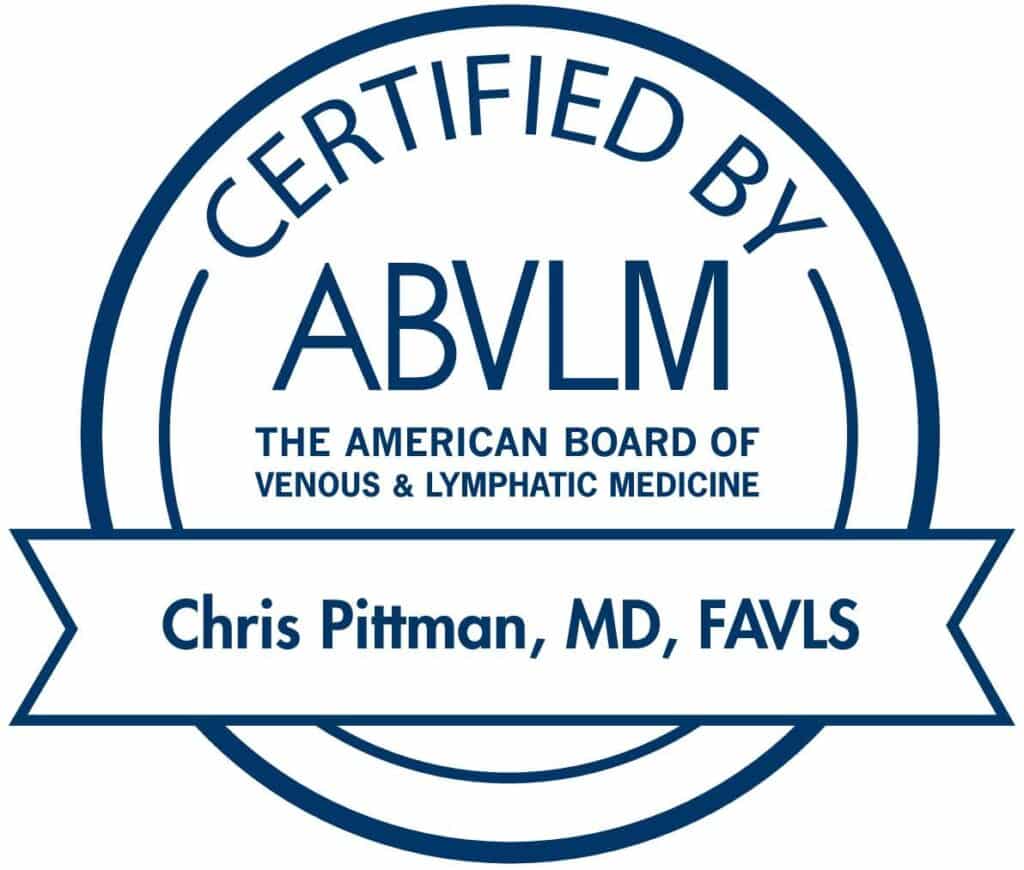What Causes Your Legs and Feet to Swell?

Vein Disease Impairs Blood Flow
Your leg veins play a crucial role in returning oxygen-depleted blood from your lower extremities back to your heart. Whenever you walk or otherwise move your legs, your calf muscles contract, helping to push the blood upward against the force of gravity. Vein disease disrupts this normally efficient process.
Chronic Venous Insufficiency
Chronic venous insufficiency (CVI) is a common type of vein disease that develops when the one-way valves inside the leg veins become weakened or damaged. If a valve malfunctions, blood may flow backward and pool in the vein. This can create pressure in the vein and force fluid to seep into the surrounding tissues, causing the legs and feet to swell.
Deep Vein Thrombosis
More serious than CVI, deep vein thrombosis (DVT) is another type of vein disease that occurs when a blood clot forms within a deep vein, usually in the lower leg. The clot may partially or completely obstruct the flow of blood. As a result, blood will begin to build up behind the clot, increasing the pressure in the vein. The elevated pressure can lead to fluid leakage into nearby tissues, resulting in swelling in the legs and feet.
Vein Disease Increases Capillary Permeability
Sustained high pressure in the leg veins (venous hypertension) can cause changes to occur in tiny blood vessels (capillaries) in the legs. Specifically, the capillaries become more permeable, which means they can allow fluid and proteins from the bloodstream to seep into the surrounding tissues. The leaking fluid can accumulate in the legs and feet, contributing to edema.
Vein Disease Causes Inflammation
Venous hypertension can also cause volatile blood flow, which can stress the walls of the veins and eventually damage them. Whenever a bodily tissue is damaged, the body’s natural inflammatory process is activated to promote healing. The resulting inflammation can alter the balance of fluid in the tissues surrounding the injury site. In cases of vein disease, this can cause swelling in the legs and feet.
Other Signs of Vein Disease
Swelling in the legs and feet caused by vein disease usually worsens throughout the day, especially after prolonged sitting or standing. Vein-disease-related edema may also be accompanied by other tell-tale symptoms, such as:
- Skin changes – Over time, the lower legs may become discolored, appearing reddish or brownish due to the accumulation of waste products in the fluid that leaked into the tissues. The skin may also feel tight, itchy, or warm to the touch.
- Leg heaviness – While the swelling itself is usually painless, some people experience heaviness, aching, cramping, and other forms of leg discomfort, especially after extended periods of inactivity.
- Varicose veins – In cases of CVI, varicose veins are often visible. These dilated, twisted, and bulging veins can be seen on the surface of the skin.
- Ulceration – In severe cases of CVI, chronic swelling and skin changes can lead to the development of venous ulcers. These open sores are often painful and slow to heal.
Entrust Your Vein Care to Vein911® Vein Treatment Centers
Vein disease often causes swollen legs and feet by interfering with efficient blood flow and causing venous hypertension. If you suspect that a vein issue may be the source of your leg and foot swelling, it is crucial to seek a specialized medical evaluation to ensure an accurate diagnosis and effective treatment plan. Contact Vein911® Vein Treatment Centers today to request a consultation with a vascular specialist in Tampa, FL. If we determine that you have vein disease, we can help you feel better, heal better, and look better.











